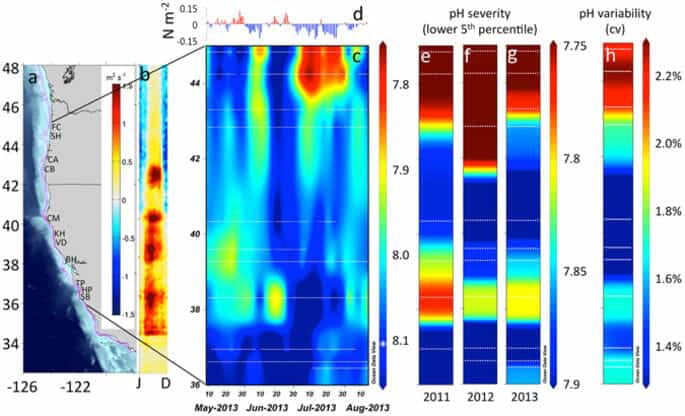Across the CCLME, we observed near-shore pH that fell well below current global mean surface ocean pH of 8.1 (Fig. 1). Minimum pH reached as low as 7.43 at the most acidified site, and up to 18% of recorded values fell below 7.8 during the upwelling season (Table S1). These minima are among the lowest reported to date for the surface ocean and match levels not projected for the global surface ocean until atmospheric CO 2 exceeds 850 ppm.

Exposure regimes to OA were also highly dynamic, exhibiting strong diel as well as event- (2 to 10 day), and intra-seasonal- (~15 to 40 day) scale variability. Daily pH ranges of up to 0.8 units were measured, as were rapid rates of change of up to 0.3 pH units per hour. Our findings indicate that coastal organisms in the CCLME face not only some of the lowest, but also some of the most dynamic pH environments currently known for surface marine systems (Fig. 2 ). Because variable pH exposure can affect organism response to OA, low and variable pH can further act as linked stressors.
Future biological impacts experiments should […]
Full article: Persistent spatial structuring of coastal ocean acidification in the California Current System
More about ocean acidification:
How About That Water Quality? Ocean Acidification
West Coast Ocean Acidification Rates Among Highest In World
Acidified Ocean Water Widespread Along North American West Coast
